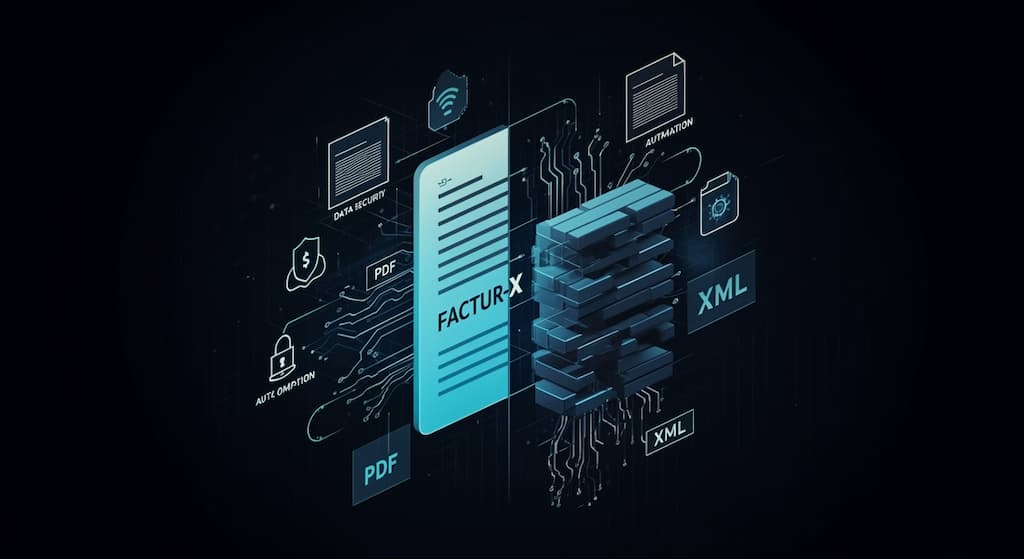

Factur-X was born from a Franco-German desire to standardize electronic invoices in order to facilitate cross-border commercial exchanges. This idea of facilitating invoicing began in 2013 in France where the electronic invoice became the equal of the paper invoice. Since this first date, everything has been done to simplify the processing of the electronic invoice.
Today, it is planned for it to be generalized to all companies, from multinationals to very small businesses. Currently, the problem is that a company with only one person may not have the means to computerize, hence the successive postponements from 2023 to 2027 to impose the digital invoice on all employees. businesses. Ask your neighborhood plumber or butcher for an invoice in JSON or XML format! It is from this simple observation that the idea came of an invoice that can be read by a person as well as by a computerized process.

The Factur-X is therefore a hybrid invoice that can be read by a person: this is the PDF part. And which can be processed automatically by a program: this is the XML part.
This invoice is an A/3 PDF with an XML file included. Since it is an A/3 PDF, it is an ISO 19005-3 standardized document. The Factur-X format is, for this simple reason, a long-lasting, open and royalty-free format intended for long-term archiving.
Will this Franco-German standardization of invoices become a European or even international standard? Before being able to answer this question, we must take into account the opinion of the detractors of the ISO 19005-3 standard. This standard, published in 2012, defines the use of PDF A/3 as a PDF file with other files inside. It is on this point that purists do not agree with the standard because it is possible to incorporate files in proprietary formats such as docx or others which are not sustainable in the long term.
The Factur-X standard is based on an ISO standard which is not unanimous but which has the merit of being usable by everyone: human as well as IT process.
Xavier LARDON